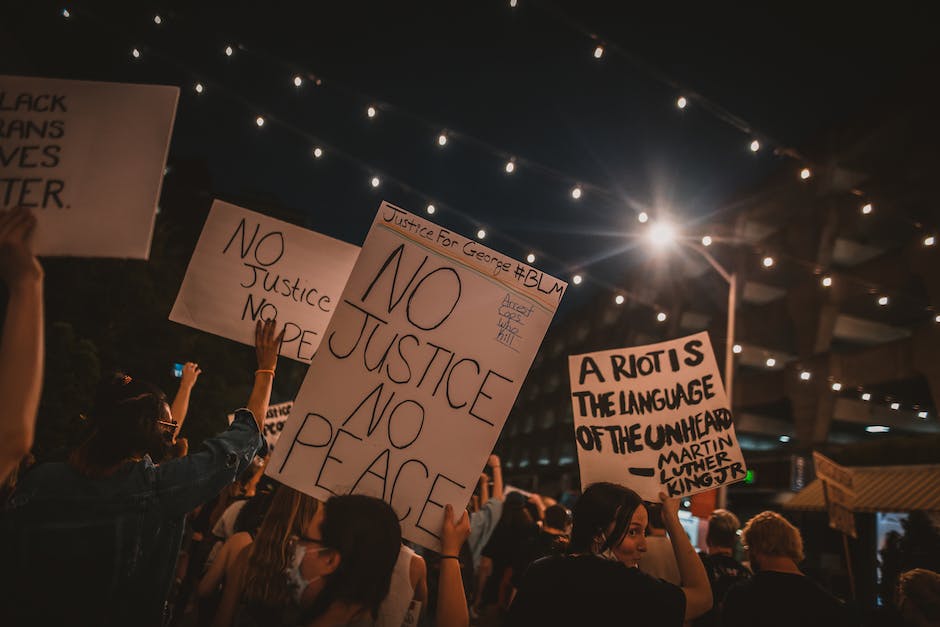Table of Contents
“Breaking Barriers, Embracing Diversity: Minimize Unintentional Prejudice in Recruitment.”
Introduction
Introduction:
Minimizing unintentional prejudice in your recruitment approach is crucial for creating a fair and inclusive hiring process. Unconscious biases can influence decision-making, leading to discriminatory practices that hinder diversity and limit opportunities for underrepresented groups. By implementing strategies to mitigate these biases, organizations can foster a more equitable and diverse workforce. In this article, we will explore effective methods to minimize unintentional prejudice in your recruitment approach, ensuring a fair and inclusive hiring process for all candidates.
The Importance of Diversity and Inclusion in Recruitment

In today’s increasingly diverse and interconnected world, the importance of diversity and inclusion in recruitment cannot be overstated. Companies that prioritize diversity and inclusion in their hiring processes are not only more likely to attract top talent, but also to foster a more inclusive and innovative work environment. However, despite the growing recognition of the benefits of diversity, unintentional prejudice can still seep into recruitment practices. This article will explore the importance of minimizing unintentional prejudice in your recruitment approach and provide practical strategies to achieve this goal.
Research has consistently shown that diverse teams outperform homogeneous ones in terms of creativity, problem-solving, and overall performance. By bringing together individuals with different backgrounds, perspectives, and experiences, organizations can tap into a wider range of ideas and approaches. Moreover, diverse teams are better equipped to understand and cater to the needs of diverse customer bases, leading to increased customer satisfaction and loyalty.
However, achieving diversity and inclusion in recruitment is not without its challenges. Unconscious biases, which are deeply ingrained stereotypes and prejudices that affect our judgments and decisions without our awareness, can inadvertently influence the hiring process. These biases can manifest in various ways, such as favoring candidates who share similar backgrounds or experiences, or making assumptions about a candidate’s abilities based on their gender, race, or age.
To minimize unintentional prejudice in your recruitment approach, it is crucial to first acknowledge and understand your own biases. This requires self-reflection and a willingness to challenge your own assumptions. Taking the time to examine your own beliefs and attitudes can help you recognize when bias may be influencing your decision-making.
Another effective strategy is to implement structured and standardized recruitment processes. By establishing clear criteria and evaluation methods, you can reduce the influence of subjective judgments and increase objectivity. This can include using competency-based interviews, where candidates are assessed against specific job-related criteria, rather than relying solely on gut feelings or personal preferences.
Additionally, it is important to ensure that your recruitment team is diverse and inclusive. By involving individuals from different backgrounds and perspectives in the hiring process, you can minimize the risk of bias and gain a more comprehensive understanding of candidates’ qualifications. This can be achieved by forming diverse interview panels or seeking input from employees with different roles and levels of seniority.
Furthermore, leveraging technology can also help mitigate unintentional prejudice. Automated resume screening tools can remove identifying information, such as names and addresses, to prevent unconscious bias based on gender, ethnicity, or socioeconomic background. Additionally, using data-driven algorithms to assess candidates can help eliminate subjective biases and focus on objective qualifications and skills.
Lastly, ongoing training and education are essential to maintaining a bias-free recruitment approach. Providing employees with diversity and inclusion training can increase awareness of unconscious biases and equip them with the tools to challenge and overcome them. Regularly reviewing and updating recruitment policies and procedures can also ensure that they align with best practices and reflect the evolving understanding of diversity and inclusion.
In conclusion, the importance of diversity and inclusion in recruitment cannot be overstated. However, unintentional prejudice can still seep into the hiring process, hindering efforts to build diverse and inclusive teams. By acknowledging and understanding our own biases, implementing structured processes, involving diverse perspectives, leveraging technology, and providing ongoing training, organizations can minimize unintentional prejudice and create a more inclusive recruitment approach. Embracing diversity and inclusion in recruitment is not only the right thing to do, but also a strategic imperative for organizations seeking to thrive in today’s global marketplace.
Strategies for Unbiased Job Advertisements
In today’s diverse and inclusive society, it is crucial for organizations to adopt recruitment approaches that minimize unintentional prejudice. Unconscious biases can seep into every stage of the hiring process, from job advertisements to candidate selection. To ensure fairness and equal opportunities for all applicants, it is essential to implement strategies for unbiased job advertisements.
One effective strategy is to use gender-neutral language in job advertisements. Research has shown that the use of masculine-coded language can deter women from applying for certain positions. By using gender-neutral terms, organizations can attract a more diverse pool of candidates. For example, instead of using words like “strong” or “competitive,” which may be associated with masculinity, it is better to focus on the skills and qualifications required for the job.
Another important aspect of unbiased job advertisements is to avoid age-related language. Phrases like “recent graduate” or “young and dynamic” can inadvertently exclude older candidates. To ensure inclusivity, it is best to focus on the skills and experience required for the role rather than specifying an age range. This approach allows candidates of all ages to feel welcome and encouraged to apply.
Additionally, it is crucial to avoid any language that may imply a preference for a particular race or ethnicity. Terms like “native English speaker” or “local candidate” can unintentionally exclude individuals from diverse backgrounds. Instead, organizations should focus on the essential qualifications and skills needed for the job, without any reference to race or ethnicity.
To further minimize unintentional prejudice, it is essential to provide a clear and detailed job description. Vague or ambiguous language can lead to biased interpretations and discourage certain candidates from applying. By clearly outlining the responsibilities, qualifications, and expectations for the role, organizations can ensure that all applicants have a fair understanding of the position.
Moreover, it is crucial to avoid any unnecessary requirements or qualifications that may disproportionately affect certain groups. For example, asking for a specific number of years of experience may exclude younger candidates or those who have taken career breaks. Instead, organizations should focus on the skills and competencies required for the job, allowing candidates from diverse backgrounds to showcase their abilities.
In addition to the language used in job advertisements, organizations should also consider the platforms and channels they use to promote their vacancies. It is important to diversify recruitment channels to reach a broader audience. Relying solely on traditional methods may limit the pool of applicants and perpetuate existing biases. By utilizing online job boards, social media platforms, and professional networks, organizations can attract a more diverse range of candidates.
Lastly, organizations should regularly review and assess their job advertisements for any unintentional biases. Conducting regular audits and seeking feedback from employees and applicants can help identify areas for improvement. By continuously striving for unbiased job advertisements, organizations can create a more inclusive and equitable recruitment process.
In conclusion, minimizing unintentional prejudice in recruitment approaches is crucial for organizations to foster diversity and inclusion. Strategies for unbiased job advertisements include using gender-neutral language, avoiding age-related language, refraining from race or ethnicity preferences, providing clear job descriptions, avoiding unnecessary requirements, diversifying recruitment channels, and regularly reviewing and assessing advertisements. By implementing these strategies, organizations can ensure fairness and equal opportunities for all applicants, ultimately leading to a more diverse and inclusive workforce.
Implementing Blind Hiring Practices
Minimizing Unintentional Prejudice in Your Recruitment Approach
Implementing Blind Hiring Practices
In today’s diverse and inclusive society, it is crucial for organizations to ensure that their recruitment processes are fair and unbiased. Unintentional prejudice can often seep into the hiring process, leading to the exclusion of qualified candidates based on factors such as gender, race, or age. To combat this, many companies are turning to blind hiring practices, which aim to eliminate bias by removing identifying information from resumes and applications.
Blind hiring is a method that focuses solely on a candidate’s skills, qualifications, and experience, rather than their personal characteristics. By removing names, addresses, and other identifying details from resumes, employers can evaluate candidates based on their abilities alone. This approach helps to level the playing field and gives all applicants an equal chance of being considered for a position.
One of the most common ways to implement blind hiring is by using blind resume screening software. This technology automatically removes identifying information from resumes, such as names, addresses, and even educational institutions attended. Recruiters can then review the anonymized resumes and make decisions based solely on the candidate’s qualifications. This method ensures that unconscious biases, such as gender or ethnicity, do not influence the selection process.
Another effective blind hiring practice is conducting blind interviews. In this approach, candidates are interviewed without revealing their personal information. This can be achieved by using video conferencing tools that hide the candidate’s face or by having a third party conduct the initial screening interviews. By focusing solely on the candidate’s responses and qualifications, blind interviews help to minimize the impact of unconscious biases.
Blind hiring practices not only help to reduce unintentional prejudice but also promote diversity and inclusion within organizations. By removing personal information from the recruitment process, companies are more likely to attract a diverse pool of candidates. This, in turn, leads to a more inclusive workforce, as individuals from different backgrounds and experiences are given equal opportunities to contribute to the organization’s success.
However, it is important to note that blind hiring practices are not a one-size-fits-all solution. While they can be effective in minimizing unintentional prejudice, they should be used in conjunction with other diversity and inclusion initiatives. Companies should also ensure that their blind hiring practices comply with legal requirements and do not inadvertently discriminate against any protected groups.
To successfully implement blind hiring practices, organizations should start by reviewing their current recruitment processes and identifying areas where bias may be present. This could include analyzing the language used in job descriptions, evaluating the criteria used to shortlist candidates, and examining the composition of interview panels. By identifying these potential biases, companies can take steps to address them and create a more inclusive hiring process.
Training and education are also crucial in implementing blind hiring practices effectively. Recruiters and hiring managers should be educated on unconscious bias and its impact on the recruitment process. They should also be trained on how to evaluate candidates based solely on their qualifications and skills, rather than personal characteristics. This will help ensure that blind hiring practices are implemented consistently and effectively throughout the organization.
In conclusion, blind hiring practices are an effective way to minimize unintentional prejudice in the recruitment process. By removing personal information from resumes and conducting blind interviews, companies can evaluate candidates based solely on their qualifications and skills. This approach promotes diversity and inclusion within organizations and helps to create a fair and unbiased hiring process. However, blind hiring practices should be used in conjunction with other diversity initiatives and should comply with legal requirements. With proper implementation and training, organizations can create a more inclusive and diverse workforce.
Training Hiring Managers on Unconscious Bias Awareness
Unconscious bias is a pervasive issue that affects many aspects of our lives, including the recruitment process. Hiring managers, who play a crucial role in selecting candidates for job positions, are not immune to unconscious bias. These biases can lead to unintentional prejudice and discrimination, which can have a detrimental impact on the diversity and inclusivity of the workforce. To address this issue, it is essential to train hiring managers on unconscious bias awareness.
Unconscious bias refers to the automatic and unintentional stereotypes and prejudices that individuals hold towards certain groups of people. These biases are deeply ingrained in our minds and can influence our decision-making process without our conscious awareness. In the context of recruitment, unconscious bias can manifest in various ways, such as favoring candidates who share similar backgrounds or characteristics to the hiring manager, or making assumptions about a candidate’s abilities based on their gender, race, or age.
To minimize unintentional prejudice in the recruitment approach, it is crucial to provide training to hiring managers on unconscious bias awareness. This training should aim to increase their understanding of the concept of unconscious bias and its impact on decision-making. It should also provide them with strategies and tools to recognize and mitigate their biases during the recruitment process.
One effective approach to training hiring managers on unconscious bias awareness is through interactive workshops and seminars. These sessions can be facilitated by experts in the field who can provide insights into the different types of biases that exist and their potential consequences. Through interactive exercises and discussions, hiring managers can gain a deeper understanding of their own biases and learn how to challenge and overcome them.
Another important aspect of training is providing hiring managers with practical tools and techniques to minimize unconscious bias in their decision-making. For example, they can be taught to use structured interview questions that focus on job-related skills and qualifications rather than personal characteristics. This helps to ensure that all candidates are evaluated based on their abilities and potential, rather than being judged on irrelevant factors.
Additionally, training should emphasize the importance of diversity and inclusivity in the workplace. Hiring managers need to understand that a diverse workforce brings a range of perspectives and experiences, which can lead to innovation and better decision-making. By highlighting the benefits of diversity, hiring managers are more likely to actively seek out candidates from different backgrounds and challenge their own biases.
It is also essential to provide ongoing support and reinforcement for hiring managers after the initial training. This can be done through regular check-ins, discussions, and sharing of best practices. By creating a culture of continuous learning and improvement, hiring managers are more likely to remain vigilant and aware of their biases, leading to fairer and more inclusive recruitment practices.
In conclusion, unconscious bias can have a significant impact on the recruitment process, leading to unintentional prejudice and discrimination. To minimize these biases, it is crucial to train hiring managers on unconscious bias awareness. Through interactive workshops, practical tools, and ongoing support, hiring managers can develop the skills and knowledge necessary to make fair and unbiased decisions. By doing so, organizations can create a more diverse and inclusive workforce, which ultimately benefits everyone involved.
Q&A
1. How can unconscious bias be minimized in the recruitment process?
By implementing blind recruitment practices, such as removing identifying information from resumes and conducting structured interviews based on predetermined criteria.
2. What role does diversity training play in reducing unintentional prejudice in recruitment?
Diversity training can increase awareness of unconscious biases and provide strategies to mitigate their impact, helping recruiters make more objective and fair decisions.
3. How can job descriptions be modified to minimize unintentional prejudice?
Job descriptions should focus on essential qualifications and skills required for the role, avoiding language that may deter or exclude certain groups. Using gender-neutral language is also important.
4. What are some effective strategies for promoting diversity and inclusion in recruitment?
Establishing diverse interview panels, setting diversity goals, partnering with diverse organizations, and implementing mentorship programs can all contribute to a more inclusive recruitment approach.
Conclusion
In conclusion, minimizing unintentional prejudice in your recruitment approach is crucial for promoting diversity and inclusion in the workplace. By implementing strategies such as blind resume screening, structured interviews, and diversity training for hiring managers, organizations can reduce bias and ensure fair and equitable hiring practices. Additionally, fostering a culture of inclusivity and regularly evaluating recruitment processes can help identify and address any potential biases. Ultimately, taking proactive steps to minimize unintentional prejudice can lead to a more diverse and talented workforce, benefiting both the organization and its employees.




